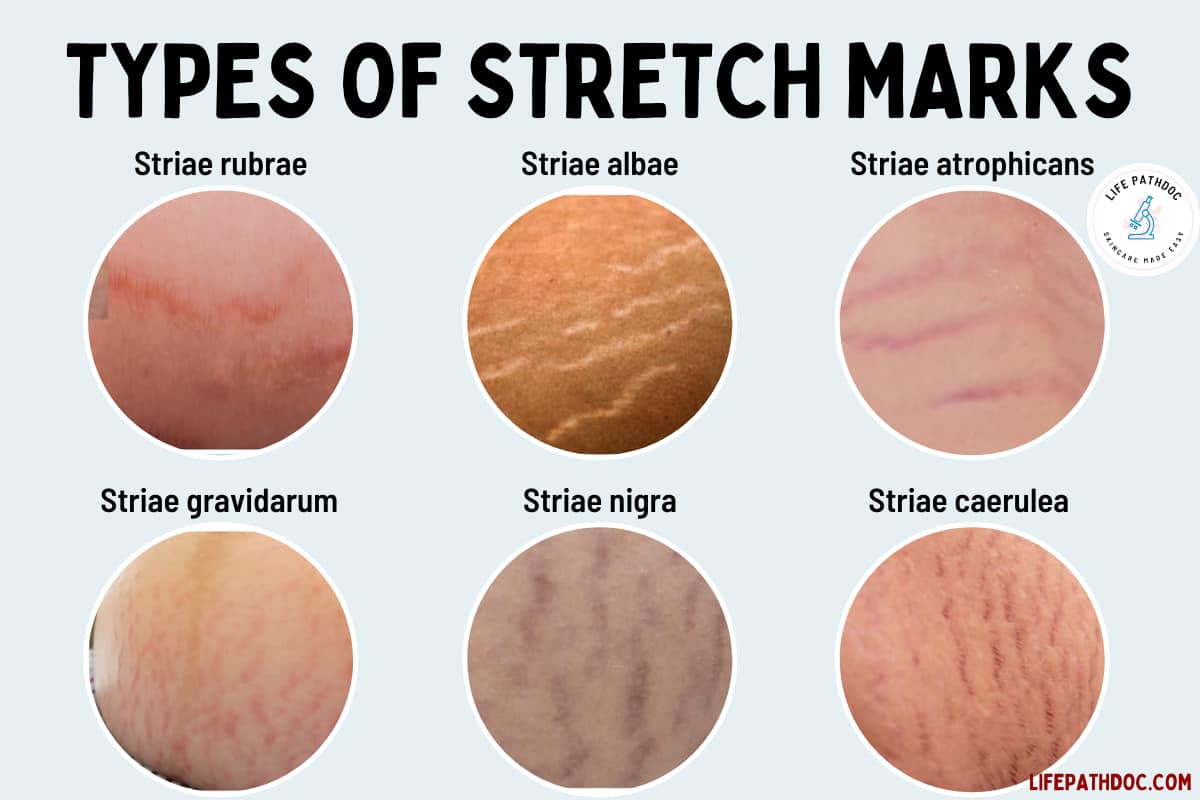Stretch marks are a common skin condition that affects many people, regardless of age or gender. Whether due to weight changes, pregnancy, or growth spurts, these marks can leave lasting impressions on the skin. However, understanding their stages can help in managing and treating them effectively.
Many individuals are unaware that stretch marks develop in distinct stages, each with its own characteristics and treatment options. In this article, we will explore the stages of stretch marks, their causes, and how they can be managed. By the end of this guide, you’ll have a clearer understanding of how to approach this common skin concern.
Table of Contents
- Introduction to Stretch Marks
- Stage 1: Early Development
- Stage 2: Striae Rubra
- Stage 3: Striae Alba
- Stage 4: Mature Stretch Marks
- Causes of Stretch Marks
- Prevention and Management
- Treatment Options for Each Stage
- Conclusion
Introduction to Stretch Marks
Stretch marks, also known as striae, are a type of scar that occurs when the skin is stretched beyond its natural elasticity. They often appear as red, purple, or pink lines on the skin and can fade over time into silvery-white streaks. While they are not harmful, many people seek ways to reduce their appearance for aesthetic reasons.
Understanding the stages of stretch marks is crucial for effective treatment and management. By identifying the stage of development, individuals can choose the most appropriate interventions to improve their skin’s appearance.
Stage 1: Early Development
What Happens in This Stage?
In the early stages of stretch marks, the skin begins to stretch rapidly, causing the dermis (the middle layer of the skin) to tear. This tearing leads to the formation of small, red or purple lines on the surface of the skin. At this stage, the marks are often itchy and may feel tender to the touch.
Common areas affected include the abdomen, thighs, hips, and breasts. Early intervention during this stage can significantly improve outcomes, as the skin is still actively healing.
- Hdhub4u Marathi Movie
- Vegamoviessi
- Kannada Movierulz 2024
- 5movierulz Kannada Movie 2024
- Kannadamovierulz
Stage 2: Striae Rubra
Characteristics of Striae Rubra
During the second stage, stretch marks enter what is known as the "striae rubra" phase. In this stage, the marks are bright red or purple and may appear slightly raised. The blood vessels beneath the skin are more visible, giving the marks their distinct color.
- Red or purple appearance
- Raised texture
- May feel warm to the touch
Treatment during this stage often focuses on promoting collagen production and reducing inflammation to help the skin heal more effectively.
Stage 3: Striae Alba
What Happens in Striae Alba?
As stretch marks progress, they enter the "striae alba" stage. Here, the marks become lighter in color, often appearing silvery or white. The skin in these areas may feel thinner and smoother than surrounding tissue.
While the marks are less noticeable in this stage, they can still be a source of concern for many individuals. Treatments during this phase may include laser therapy or topical creams to improve the overall appearance of the skin.
Stage 4: Mature Stretch Marks
Managing Mature Stretch Marks
In the final stage, stretch marks are considered mature. They are typically flat, white, and less noticeable. However, they may still be visible, especially in areas of significant stretching.
At this stage, treatments focus on improving skin texture and reducing the visibility of the marks. Options such as microdermabrasion, chemical peels, and laser treatments can be effective in achieving these goals.
Causes of Stretch Marks
Stretch marks can be caused by a variety of factors, including:
- Rapid weight gain or loss
- Pregnancy
- Growth spurts during puberty
- Certain medical conditions, such as Cushing’s syndrome
- Genetic predisposition
Understanding the underlying cause of your stretch marks can help in determining the best course of treatment. For example, individuals with hormonal imbalances may benefit from addressing the root cause alongside cosmetic treatments.
Prevention and Management
How Can You Prevent Stretch Marks?
While not all stretch marks can be prevented, there are steps you can take to reduce their likelihood:
- Maintain a healthy weight to avoid rapid fluctuations
- Stay hydrated to keep your skin supple
- Use moisturizers rich in vitamins A and E
- Exercise regularly to improve skin elasticity
For those who already have stretch marks, managing them involves a combination of skincare routines and professional treatments. Consistent use of creams and oils can help improve the appearance of the skin over time.
Treatment Options for Each Stage
Targeted Treatments Based on Stage
Treatment options vary depending on the stage of the stretch marks:
- Stage 1: Topical creams containing retinoids or hyaluronic acid
- Stage 2: Laser therapy to promote collagen production
- Stage 3: Microdermabrasion or chemical peels
- Stage 4: Advanced laser treatments for texture improvement
Consulting with a dermatologist can help you determine the most effective treatment plan for your specific needs.
Conclusion
Stretch marks are a common and natural occurrence, but understanding their stages can empower you to take control of your skin’s health. From early development to mature marks, each stage offers unique opportunities for treatment and management. By maintaining a healthy lifestyle, using appropriate skincare products, and seeking professional advice when needed, you can effectively address this concern.
We encourage you to share your experiences or ask questions in the comments below. Additionally, feel free to explore other articles on our site for more tips and insights on skin care and overall wellness.
Medically reviewed by Leigh Ann Anderson, PharmD. Last updated on Aug 19, 2024.
- Themoviesflixin
- 5movierulz2024
- Filmyfily Com
- Hdhub4u Movies Hindi Your Ultimate Guide To Streaming Bollywood Hits
- Telugu Movierulz 2025 Your Ultimate Guide To The Hottest Blockbusters And Downloads


